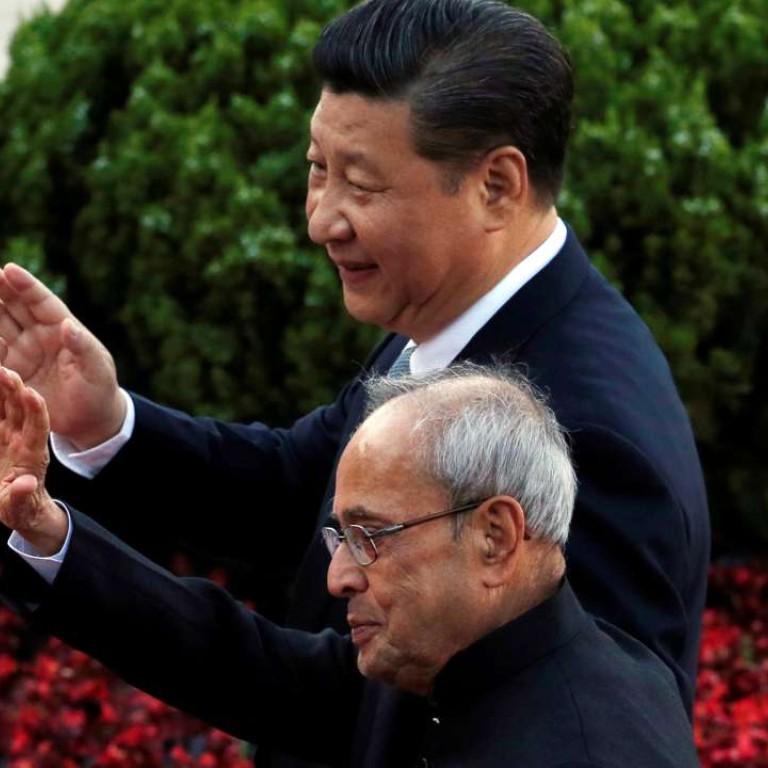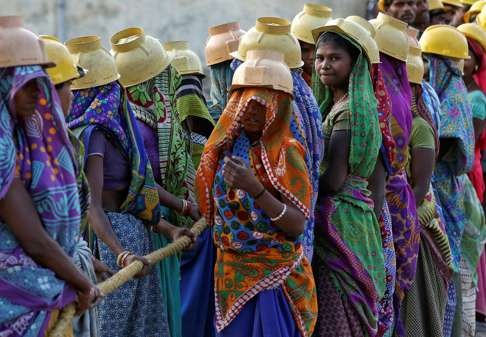
Why India must shun any crude anti-China alliance with the US
Neeta Lal says in the evolving shadow play between the US, China and India, New Delhi should resist being drawn into a stand-off that hurts rather than promotes its own interests
A recent Pentagon report stating that China is deploying additional troops along its border with India, besides modernising its nuclear force and bolstering its strike capabilities, has rattled New Delhi, which fears its giant Asian neighbour may be girding up for possible conflict.
However, Beijing has reacted sharply to the report, accusing the US government of misrepresenting China’s military development, distorting its defence policies and hyping its military threat.
These negative reactions and counter-reactions emanating from Washington and Beijing, just ahead of Indian Prime Minister Narendra Modi’s visit to the US next month, and Indian President Pranab Mukherjee’s sojourn to China last week, highlight an interesting shadow play between the US, India and China.
Great power relations: How the US, China and India will forge new partnerships on nuclear energy in 2016
They also coincide with India’s own recent tensions with China. Delhi is irked by Beijing repeatedly stonewalling its bid at the UN to get Jaish-e-Mohammad chief Masood Azhar (responsible for many terrorist acts in India) banned, as well as scuppering its entry to the Nuclear Suppliers Group, both ostensibly at the behest of Pakistan.

China, India ‘still rivals’ despite the warm words
The 48-member Nuclear Suppliers Group, which regulates trade in nuclear technology, will have its plenary next month, when it will consider India’s admission into the exclusive club. India got an exemption from the group for nuclear imports in 2008, following a civil nuclear pact with the US, despite not being a signatory to the nuclear Non-Proliferation Treaty. However, China maintains that signing of the treaty is pivotal for all members as well as the group’s expansion, an assertion Washington challenges. The US supports India’s membership based in part on its sterling non-proliferation record.
There’s no denying that India acts as the perfect countervailing force to China’s growing clout in Asia
Some believe Beijing’s actions are guided by its assumption that the US is employing the colonial tactics of “divide and rule” to court India as a strategic counterweight to China in Asia. China has also objected to the presence of Indian navy ships in the South China Sea. Four Indian naval vessels will shortly participate in a Malabar exercise with America and Japan off Okinawa in Japan. The US is planning more joint exercises in the region, with an US$8 billion budget for submarines and undersea drones.
From a strategic perspective though, there’s no denying that India acts as the perfect countervailing force to China’s growing clout in Asia. As Asia’s third-largest economy, India is a major regional economic player as well as an active participant in regional maritime issues. Under a nationalist government, Delhi is also getting increasingly vocal on issues like freedom of navigation in the South China Sea and Indian Ocean region, leading the US to cultivate Delhi as an integral part of its Asia policy.
India, US reach preliminary agreement on sharing military logistics amid China challenge
The US and India share an overarching interest in checking Chinese regional expansion. Both Obama and Modi have been trying to leverage this interest to buttress mutually reinforcing goals. Delhi’s involvement can benefit US strategic interests by upsetting Beijing’s own calculations, even though the US is emphatic that it is befriending India not because of China, but because of its importance as a regional player with heft.

Amid the economic gloom, India’s rise couldn’t come at a better time
Despite these complementarities though, a crude, anti-China alliance is anathema to Delhi. Given India’s geographical proximity to China, with which it shares a 4,057km border, and an increasing buoyancy in Sino-Indian economic relations, this isn’t a prudent move either.
Be that as it may, tiffs between China and India over long-standing issues continue to create bilateral dissonance. Tensions often flare along the shared border over Arunachal Pradesh (which China claims as its own), and over the Aksai Chin region at the western end of the Tibetan Plateau, even though the two signed the Border Defence Cooperation Agreement in 2013.
Adding complexity to the dynamic is Pakistan, which remains China’s primary customer for arms sales and military cooperation, an alliance which makes India nervous due to rising terrorism threats along its border with Pakistan. How these plots and subplots play out between the salient players will strongly affect Asian geopolitics.
Neeta Lal is a New Delhi-based senior journalist

